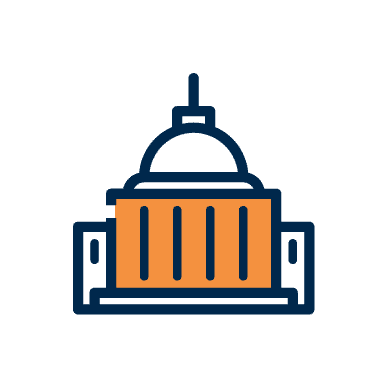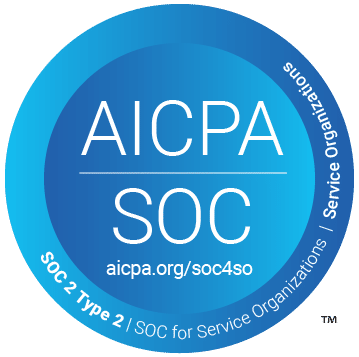
The U.S. Department of Health and Human Services (HHS) Assistant Secretary for Preparedness and Response (ASPR) created a new toolkit under their Technical Resources, Assistance Center, and Information Exchange (TRACIE) unit. This toolkit was created to meet the information and technical assistance needs of federal staff, healthcare coalitions/entities/providers/system preparedness, emergency managers, public health practitioners, and others.
This “living” toolkit is geared for decision-makers managing healthcare workforce challenges in response to the COVID-19 emergency. This toolkit consists of a growing collection of COVID-19 promising practices, plans and tools. The complete contents of the toolkit can be found in the orange box below. In this blog series, we will first highlight COVID19 resources from two challenging areas: Liability Protections & Licensure Requirements for those using volunteers (which is covered in this blog) and Workforce Resilience and Sustainability (in next week’s blog).
HHS TRACIE VIRTUAL COVID-19 TOOLKIT CONTENTS
Federal Regulatory and Funding Flexibilities
State, Territorial, and Local Resources
Workforce Surge Planning and Volunteer Matching
Healthcare Workforce Training Resources
Workforce Protection Resources
Workforce Resilience/Sustainability Resources
HHS COVID-19 Toolkit
Is your organization using or considering the use of on-site volunteers during the COVID-19 emergency? While US government debate occurs about a comprehensive liability shield and how businesses can be protected from COVID-19 emergency lawsuits, businesses can protect themselves by following current protections within current governmental legislation. While not specific advice, this article provides a list of federal laws (CARES, PREP, PAHPAIA, VHP, VPA) and state laws (EMAC, ESAR-VHP, UEVHPA) specific to volunteer recruitment issues.
For customized advice, the best course of action is to consult with your independent legal counsel and insurance advisors on risk mitigation. For specific information on COVID-19 outbreak management, please refer to the CDC’s Coronavirus Disease 2019 webpage for the most up-to-date clinical guidance. Healthcare workforce decision-makers and healthcare professionals interested in volunteerism during the COVID-19 emergency should familiarize themselves with details of the following protections afforded to them.
Federal Level Legislation
| Act | Year | What it Does |
|---|---|---|
| CARES ACT | 2020 | The notable Coronavirus Aid, Relief and Economic Security Act (CARES Act) reduces the medical malpractice liability for providers who volunteer their COVID-related medical services during the public health emergency. This limitation generally excuses a member from liability under federal or state law for any act or omission they make as a volunteer that might harm patients. To qualify for these protections, the volunteer health professional must be: (1) Acting within the scope of the license, registration, or certification of the volunteer health care provider, as defined by the state of licensure, registration, or certification. (2) Not exceeding the scope of license, registration, or certification of a substantially similar health professional in the state in which such act or omission occurs; and (3) Acting in a good faith belief that the individual being treated is in need of health care services. |
| Public Readiness and Emergency Preparedness Act (PREP) | 2020 | PREP Act declaration is specifically for the purpose of providing immunity from liability, and is different from, and not dependent on, other emergency declarations. COVID-19 Countermeasures from PREP were issues February 4, 2020. |
| Pandemic and All-Hazards Preparedness and Advancing Innovation Act (PAHPAIA) | 2019 | PAHPAIA broadly aims to strengthen US emergency response workforce, improve government coordination and accelerate the advanced research, development and federal purchasing of medical countermeasures. The PAHPAIA additionally addresses Medical Reserve Corps or a professional included in the state-level Emergency System for Advance Registration of Volunteer Health Professionals. |
| Health Center Volunteer Health Providers (VHP) | 2016 | Section 9025 of the 21st Century Cures Act and subsection 224(q) extends eligibility for liability protections for the performance of medical, surgical, dental, and related functions to certain sponsored VHPs of health centers (and health center subrecipients) that have also been deemed as employees of the Public Health Service. Please also see the FTCA Health Center Policy Manual. |
In addition to federal legislation, state legislatures are often seen as local laboratories of change, coming up with unique solutions to unique problems—and meeting the needs of citizens in a way that Congress cannot. Please check if your state is party to these additional liability protections for volunteers
State Level Legislation
| Act | Year | What it Does |
|---|---|---|
| Emergency Management Assistance Compact (EMAC) | 2020 | A Non-Federal compact that all 50 states and five territories have become party to a mutual aid agreement. This agreement is the only all hazards mutual aid agreement in the nation to be nationally adopted and congressionally ratified. EMAC addresses liability and responsibilities of cost and allows for credentials, licenses, and certifications to be honored across state lines. For personnel requests, the requesting state covers the tort liability and the responding state covers the workers’ compensation liability. The EMAC addresses liability and responsibilities of cost and allows for credentials, licenses, and certifications to be honored across state lines. For personnel requests, the requesting state covers the tort liability and the responding state covers the workers’ compensation liability. |
| Emergency System for Advance Registration of Volunteer Health Professionals (ESAR-VHP) | 2002 | The Emergency System for Advance Registration of Volunteer Health Professionals (ESAR-VHP) is a federal program managed by the HHS Office created to support states and territories in establishing standardized volunteer registration programs for disasters and public health and medical emergencies. The program, administered on the state level, verifies health professionals’ identification and credentials so that they can respond more quickly when disaster strikes. By registering through ESAR-VHP, volunteers’ identities, licenses, credentials, accreditations, and hospital privileges are all verified in advance, saving valuable time in emergency situations. |
| Uniform Emergency Volunteer Health Practitioners Act (UEVHPA) | 2006 | The uniform model law that supports the rapid deployment of volunteer health professionals during disasters and provides license reciprocity to responders. Seventeen states, the District of Columbia and U.S. Virgin Islands have enacted this Act. Their liability protections include either clear immunity to volunteer health practitioners for acts that occur while providing services during an emergency; or liability protection for acts or omission while providing health care services. |
In addition to Licensure Requirements for all Health professionals, the toolkit also contains discipline tools. Licensure specific resources are available for Nurse Practitioners, Dentists, Nurse Anesthetists, Nurses, Pharmacists, Physician Assistants, Physicians, Respiratory Therapists, Psychologists, and Social Worker.
Licensure Requirements for all Health Professionals
| Act | Year | What it Does |
|---|---|---|
| Uniform Emergency Volunteer Health Practitioners Act | A non-federal act by the Uniform Law Commission, the uniform model law was developed to support the rapid deployment of volunteer health professionals during disasters and provide license reciprocity to responders. | |
| Occupational Licensing During Public Health Emergencies | This webpage provides information on emergency-response licensure laws that states have enacted or activated to allow health professionals to come in from other states and practice their profession without being required to seek a state-specific license. |
Lastly, more tools and resources for decision-makers managing healthcare workforce challenges, can be found at HHS’s detailed COVID-19 Workforce toolkit. Additionally, COVID-19 guidance can be found at the U.S. Office of Personnel Management (OPM) website.




































